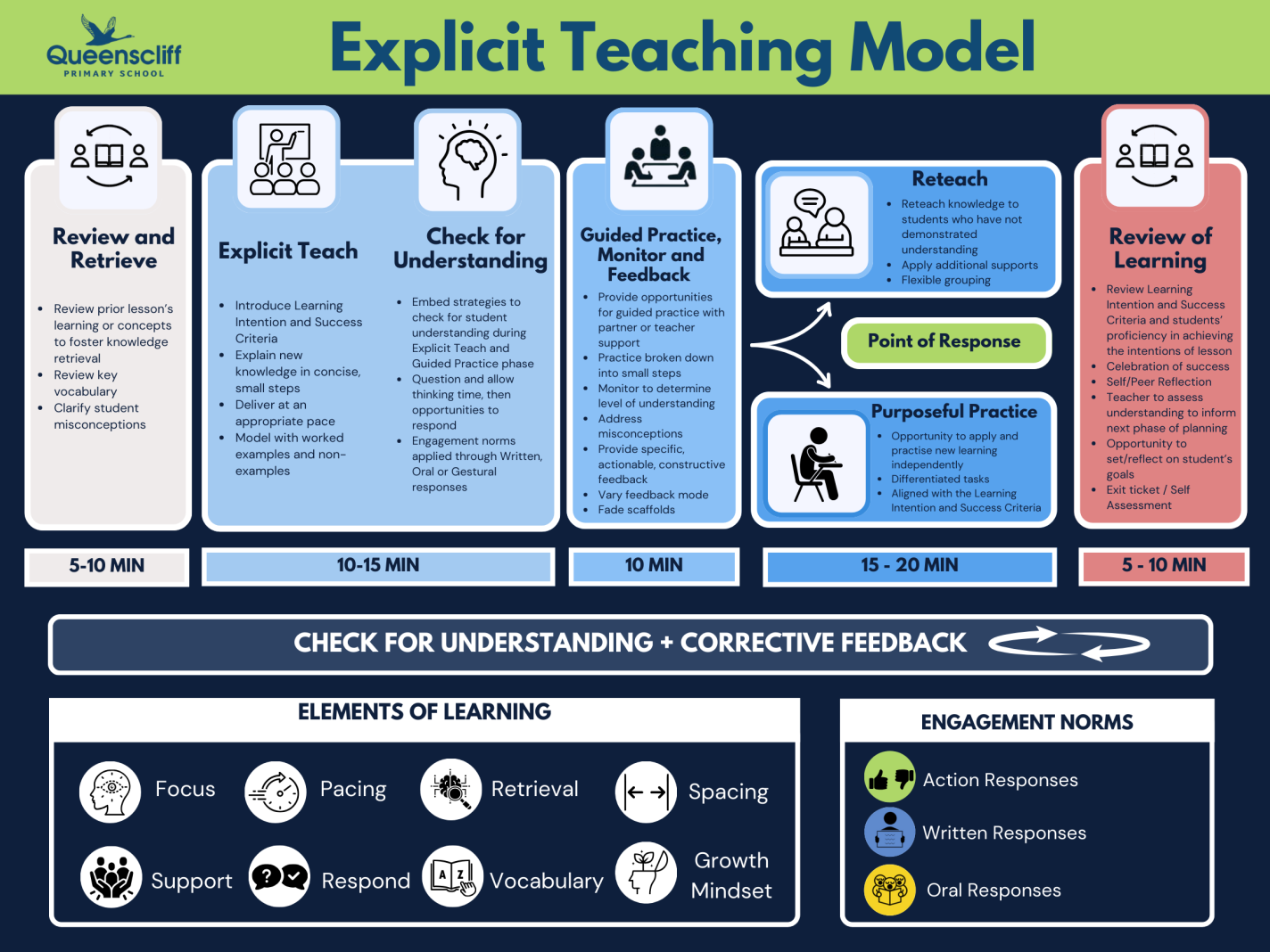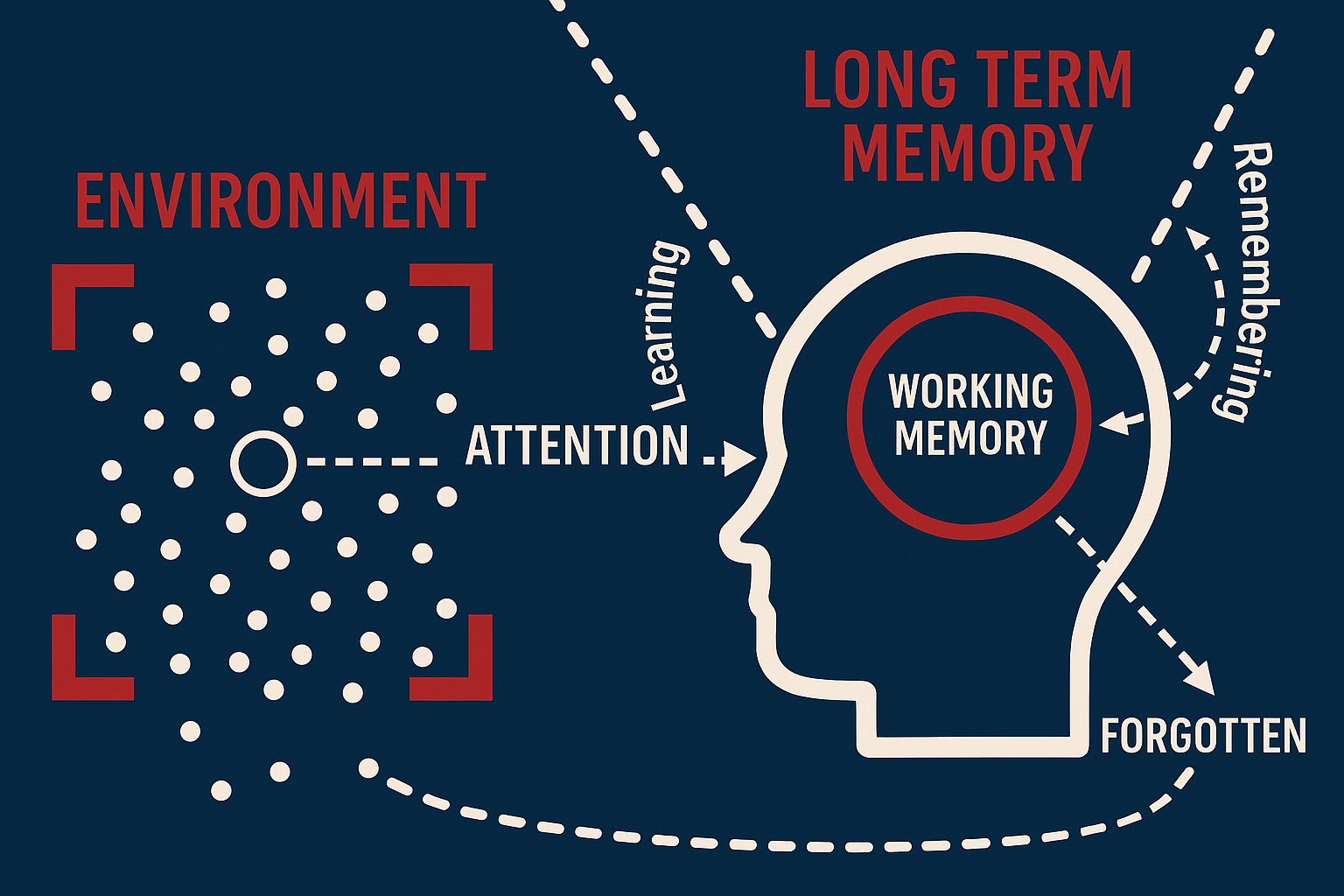Our Explicit Teaching Approach
At our school, we use Explicit Teaching as a key instructional practice, aligned with the Victorian Teaching and Learning Model 2.0. Our teachers clearly explain and model what students need to learn, step-by-step, using proven strategies that support all learners to retrieve information and consolidate new learning. Explicit Teaching breaks down what students need to learn into smaller learning chunks and models each step. It allows students to process new information more effectively. Explicit Teaching practices involve teachers clearly showing students what to do and how to do it, rather than having students discover that information themselves.
Lessons are carefully structured, so students understand the purpose of their learning, what success looks like, and how to achieve it. Teachers actively check for understanding using a variety of written, gestural and oral responses ensuring students are actively participating during the teaching phase of the lesson. Teachers provide targeted and corrective feedback throughout the teaching phase, helping every student build confidence and make progress. This approach creates a safe, supportive, and focused learning environment where all students are set up for success. Explicit Teaching is a highly effective approach to learning where teachers provide clear, direct instruction to help students understand exactly what they are learning, why it’s important, and how to do it.
Key Strategies and Techniques for Explicit Teaching
At Queenscliff Primary School, we embed the key strategies and techniques of Explicit Teaching into our teaching and learning programs.

Explicit Teaching Instructional Model
Our school embeds the following Explicit Teaching Instructional Model into all teaching and learning experiences, including Specialist subjects.

Key Principles of Explicit Teaching
At the beginning of each lesson, teachers review prior learning from the previous lesson including, key vocabulary, learning concepts. This provides students with the opportunity to retrieve information enhancing the likelihood of the learning being transferred to students' long term memory. In addition to this, it allows the teacher to provide further teaching to clarify misconceptions and provide feedback.
Teachers clearly explain what students are expected to learn in each lesson. As a result, students understand the goal of the lesson and how it connects to their learning journey. Through having clear learning intentions, students understand the purpose of the lesson and its significance.
In each lesson, teachers provide a Success Criteria linked to the lesson's Learning Intention. This enables students to check their own understanding and know when they are achieving the desired outcomes of the lesson. Students are shown examples of what success looks like. The Success Criteria is not only referred to in the Explicit Teach phase of the lesson, but is referred to throughout the Guided Practice, Purposeful Practice and Review of Learning to ensure students have a clear understanding of what they are working towards
During the Explicit Teaching phase of the lesson, teachers demonstrate skills, processes, or concepts out loud, step-by-step. This is delivered in small chunks to ensure students do not experience cognitive overload. During this phase of the lesson, teachers are continually applying strategies to check for students understanding through written, gestural and verbal responses. The Explicit Teach phase of the lesson is delivered at an appropriate brisk pace with concepts being explained to students in small chunks.
In all lessons, students are provided with an opportunity to practise the application of their new learning with teacher’s support. During this phase, teachers monitor students progress, ask questions, check for understanding and provide corrective and specific feedback to build confidence and accuracy.
It is during this phase; teachers will engage in 'Responsive Teaching'. They will determine the level of understanding of students have gained through the Explicit Teach and Guided Practice phases of the lessons, to determine whether to move onto Purposeful Practice or to reteach the key concepts of the lesson with further supports. At this point int he lesson, the teacher may engage in flexible grouping whereby some students may move onto applying their new learning independently during Purposeful Practice whilst others engage in a reteach of the concepts
Once students have demonstrated a level of understanding through the Explicit Teach and Guided Practice phases of the lesson, they will move into Purposeful Practice. Purposeful Practice provides students with an opportunity to apply their new learning independently. Teachers continue to provide support during this phase, however, the level of support and scaffolding is reduced from Guided Practice.
Throughout all phases of the Instructional Model, teachers are consistently providing students with corrective, specific feedback to enhance students understanding of the new knowledge and key concepts.
During the Explicit Teach, Guided Practice and Purposeful Practice phases of the lesson, teachers embed a range of strategies to check for students understanding. These techniques are adopted as strategies to continually assess students understanding and it is used by the teacher to inform the next phase of the lesson and whether further reteaching is required. Written, gestural and oral strategies for checking for understanding are embedded into all lessons. Checking for understanding strategies also enable students to be actively participate in all phases of the lesson, including the Explicit Teach and Review.
Why Explicit Teaching?
Explicit Teaching is a very efficient strategy for helping students learn because it suits how the brain processes, stores, and retrieves information.
Memory Types
The human brain can store a large amount of information in long-term memory, which can be thought of as a vast network of interconnected ideas. Effective teaching will successfully establish and build connections to new information in students’ long-term memory. Having more connections to a specific piece of information makes it easier to recall and use. Another type of memory is working memory, which holds the information being used at any one time. The information held in working memory is not always stored as an individual fact, but rather a ‘chunk’ which can be anything from a single fact to a complex idea. Research has suggested that people can only hold four to seven chunks of information in working memory.

Preventing Cognitive Overload
Learning new concepts can be challenging, and it can be harder to move information to long-term memory, if students are presented with more information than working memory can contain. The scientific term for having too much information in working memory is cognitive overload.
Presenting new information in manageable amounts helps students to learn more effectively. When a small amount of information is taught at one time, or when there are ample breaks in learning, students are not cognitively overloaded. They are more likely to be able to move the information from working memory to their long-term memory, where it can be easily used to build on existing long-term memories and retrieved in the future.
